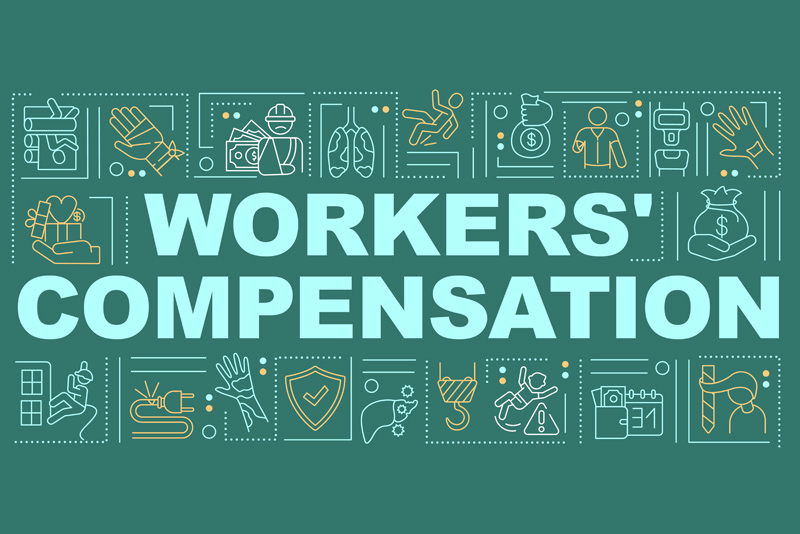Workers’ compensation benefits are paid to employees injured or taken ill at work. It includes coverage for medical treatment, lost wages, compensation for permanent partial disability and permanent total disability. Attorneys handling workers’ compensation cases utilize medical record review services for efficient and speedy evaluation of the all-important medical records. Though workplace safety is much improved in modern times, the USA Bureau of labor Statistics says that around 3.4 workers’ compensation claims are filed for every hundred full-time employees. In this blog, we have compiled some interesting facts about workers’ compensation that should be of interest to attorneys practicing in this legal area, as well as employers responsible to pay compensation to injured employees.
The Most Disabling Workplace Injuries
The 2020 Liberty Mutual Workplace Safety Index or WSI provides details on the costliest causes of disabling workplace injuries in the United States. These injuries caused employees to miss work for more than 5 days. The ranking is based on the direct cost of the injuries to employers in terms of medical and lost wage expenses.
- Handling Objects: Injuries caused by heavy boxes, equipment and so on. The cost per year is $13.98B.
- Falls on the Same Level: Usually resulting from a wet floor or liquid spill on the floor. The cost per year comes to $10.84B.
- Hit by Falling Objects: Here, the cost incurred per year is $6.12B.
- Falls to a Lower Level: Injuries caused typically from falls caused by a shaky ladder. Costs amount to $5.71B a year.
- Awkward Postures: Uncomfortable or awkward postures lead to injuries that in turn run to costs of $4.69B a year.
- Vehicle Crashes: Usually resulting from rash/distracted or drunk driving, costs per year estimated at $3.56B.
- Slip/trip without Fall: Slippery or uneven walkways cause a number of such injuries, and the cost per year is $ 2.06 billion.
- Repetitive tasks Involving Microtasks: The estimated cost is $2.05B. Injuries are caused by tasks that are hand-intensive.
- Colliding with Objects: Costing the system $2.0B per year, in this category the injuries result for instance, from workers colliding against concrete pillars, or some other hard object.
- Running Equipment/Machines: The cost is $1.92B per year and injuries are caused by moving machinery or other equipment.
The Bureau of Labor Statistics (BLS) has found that the total number of injuries per 100 full-time workers remained unchanged at 2.8 as in the year 2018. Before 2018, this figure had dropped steadily over the previous fifteen years, remaining the same from year to year only twice. Other statistics that remained unchanged from the previous year are:
- Work-related injuries/illnesses resulting in days away from work (0.9 per 100 full-time workers)
- Work-related injuries/illnesses leading to job transfers or restrictions (0.7 per 100 full-time workers)
Occupations with the Highest Incidence of Workplace Injuries
The 2020 workplace injury statistics published by BLS show that the following professions had the highest injury rates per 10,000 full-time equivalent or FTE workers.
- Nursing assistants, with around 370 incidents
- Heavy truck and tractor/trailer truck drivers, with approximately 360 incidents
- Laborers and stock, freight, and material movers, with around 350 incidents
- Light truck drivers, 340 incidents
- Construction laborers, 250 incidents
- Maintenance and repair workers, with around 210 incidents
- Stockers and order fillers, 150 incidents
- Janitors and cleaners, with around 120 incidents
- Registered nurses, with approximately 105 incidents
- Retail salespersons with around 60 incidents
The following list shows the injuries (from most to least), which lead to employees and independent contractors to miss the most time from work.
- Multiple injuries with fractures (average of 48 days)
- Fractures (average of 32 days)
- Amputations (average of 31 days)
- Carpal tunnel syndrome (average of 30 days)
- Tendonitis (average of 14 days)
- Sprains, strains, and tears (average of 11 days)
- Multiple traumatic injuries (average of nine days)
- Soreness or pain (average of eight days)
- Multiple injuries with sprains (average of seven days)
- Bruises and contusions (average of five days)
- Heat (thermal) burns (average of five days)
- Cuts, lacerations, and punctures (average of four days)
- Chemical burns (average of three days)
Six Most Common Causes of Fatal Accidents on the Job
The Bureau of Labor Statistics also noted that the number of fatal workplace accidents is increasing, though the number of non-fatal workplace accidents shows a decrease. They point out that the six most common causes of fatal accidents on the job are:
- Transportation accidents
- Violence and other injuries caused by persons or animals
- Falls, slips, and trips
- Contact with equipment/objects
- Exposure to toxic substances/environments
- Fires and explosions
Occupations with the Highest Number of On-the-job Injuries
Following are the occupations with the greatest number of workplace-related accident fatalities based on the data available in 2019.
- Agriculture, forestry, hunting, and fishing
- Transportation and warehousing
- Construction
- Wholesale trade
- Professional and business services
States with Maximum Workplace Deaths
Now, the states with the highest number of workplace deaths are California and Texas, though they had relatively low job-related fatalities incident rates. The highest incident rates for job-related fatalities were seen in the following states, with the number of fatalities per 100,000 full-time equivalent workers given in the brackets.
- Wyoming (11.5)
- Alaska (9.9)
- North Dakota (9.6)
- West Virginia (7.9)
- South Dakota (6.9)
- Mississippi (6.7)
Safety Violations Observed by OSHA
Now let us look at the most common safety violations as stated by OSHA (Occupational Safety and Health Administration) in their 2020 report. According to OSHA, these violations lead to a significant number of fatal and non-fatal workplace injuries each year.
- Inadequate fall protection
- Inadequate standards for hazard communication
- Unsafe scaffolding
- Failure to control hazardous energy (lockout/tagout violations)
- Inadequate respiratory protection
- Unsafe ladders
- Inadequate fall protection training
- Powered industrial truck safety violations
- Unsafe machinery and inadequate machine guarding
- Inadequate eye and face protection
A Good Safety Program Is Vital
While it is a relief that some jobs are witnessing a fall in physical injuries, some others (first responders for instance) are seeing an increase in mental trauma and related concerns. Post-traumatic stress disorder has increased with the increase in the number of weather-related catastrophes, workplace violence, and school incidents. Another thing to note is the increase in independent contractors in the U.S. workforce – an Intuit study had estimated that by 2020, 40% of U.S. workers will be independent contractors. Though independent contractors can be flexible regarding their workload and schedules, details of medical coverage for on the job injuries are not very clear and are still being discussed.
Every company must have a good safety program, which will help improve employee safety and satisfaction, while also reducing the number of workers’ compensation claims and premiums. Whatever be the injury or illness sustained by workers, medical record review remains an important requirement for attorneys handling workers’ comp cases. It is vital for injured workers to receive the medical care necessary as well as compensation for their lost wages. To have a clear understanding of the medical data, attorneys will find the service of a medical review company very helpful.




